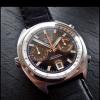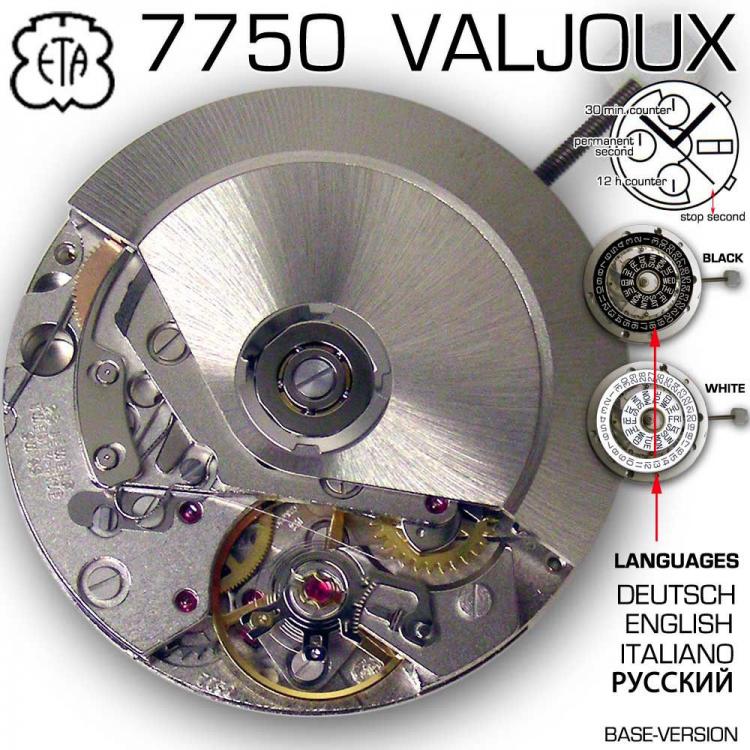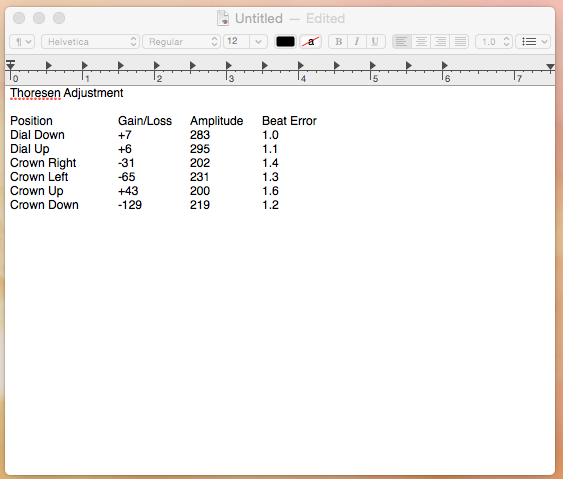Search the Community
Showing results for 'Radium'.
-
I definitely am not an authority on Hazmat procedures . In the past , when Hazmat started to be a concern , when we would have to drill a hole in suspected hazmat materials such as asbestos painted walls and floor tiles , we would use shaving cream around the area we were drilling to capture the dust and particles so they wouldn't float in the air we were breathing . I'm thinking that maybe this method could be used with the radium lume ???
-
Thanks fellas, very useful information - I was wondering if it would be radium. I took of the balance to check, definitely nothing out of the ordinary. The only markings on the watch I can see so far are the 72 on the balance. That is a really nice looking watch dman. My case and dial are in poor condition so I'm not going to end up with anything that good.
-
Here is my dial and hands re-lumed. On the dial I gently flicked off the radium into a water tank with a toothpick. The hands I just put in my ultrasonic. The relume was standard issue from there. I think it came out good and I won't glow :-) Sent from my iPhone using Tapatalk
-
Remember. And lume remaining on this watch will be radium. You should get rid of it and have it relumed Sent from my iPhone using Tapatalk
-
See here http://glycine-watch.ch/glycine/history/, and here http://www.glycintennial.com/collection.html Looks like you do have a Glycine 72, which was an in house movement, and the watch is from the 1950s. The first link has a picture of a seemingly identical piece. The lume is most likely radium... so try not to eat it. If you need parts, then you'll probably be best off looking for a spare movement from ebay
-
Hey gang, I know, another tritium question. Please have mercy on me. So I just purchased a Hamilton watch. It was supposedly made in 1972 and shows the T Swiss T label at 6 o'clock. I am therefore assuming it is a tritium watch. You can see the lume on the hands and little dots at each hour. I don't know what tritium tubes look like, but this seems to be painted on to me. Health wise, I'm sure the best thing to do would be to never open it and just wear it. However, I really would like to try to service it. The crystal could probably stand to be replaced at some point too. So, I have read every post that I could find on the Internet about dealing with tritium (radium too while I was at it, just to try and get all the info I could). Basically, what I have come away with is that it is okay as long as you don't inhale or ingest the radioactive dust. The thing that I cannot find on the Internet is how do you do that in real life. So, I guess I am hoping for some pointers on steps to take to ensure that you don't inadvertently snort up some dust while you are working on the movement one inch from your face. Likewise, what steps do you take to make sure that the dreaded dust doesn't contaminate your workspace? Again, I may just let it go and not worry about opening it. If I could find some practical techniques to mitigate the potential issues, then I would be tempted to go for it. I just don't want to dust all the food in my kitchen (my current workshop) with anything in addition to what Monsanto has already sprayed on there. Thank you all for you patience with a newb question about a sensitive topic.
-
It is indeed Tritium, which is radioactive but only very slightly, so unless you lick the dial or inhale the lume you'll be fine! It's no where near as dangerous as Radium used on very early dials.
-

Radium dial? Helva super compressor watch.
rodabod replied to rogart63's topic in Watch Repairs Help & Advice
Having looked elsewhere, as I guess the original poster probably has already, it certainly seems as if "Swiss RA" does suggest Radium. It may have been re-lumed with Tritium later though, so still worth checking. -

Radium dial? Helva super compressor watch.
rodabod replied to rogart63's topic in Watch Repairs Help & Advice
I have never seen this to be the case as the sulfide mix (or whichever substrate is used for the Radium to excite) usually deteriorates to the point where the watch no longer glows at all, despite still being radioactive. -
Radium dial? Helva super compressor watch.
vinn3 replied to rogart63's topic in Watch Repairs Help & Advice
tridium is rather new. radium on dials goes back many years. my counter was sold as military surplus. my german aircraft clock, from 1040 will set off the alarm. so, even though it does not glow in the dark it's still hot. vinn -
Radium dial? Helva super compressor watch.
szbalogh replied to rogart63's topic in Watch Repairs Help & Advice
Just put it in the drawer for 2 days and get it out in the dark. If still bright, then it has some radioactive compound. If its brightness fades in the dark quickly then it is zinc-sulfide based, if still readable after one day in the dark, then it is amybe strontium-aluminate based. Ra on the dial however is indicating Radium. It is fading to 50% in about 1600 years, so it should be as bright as it was 50 years ago. By the way, one super compressor is my dream. I am jealous -
Slow Day at the Office - Rolex Bubbleback
Don replied to Don's topic in Chat About Watches & The Industry Here
If anyone is not familiar with the "Radium Girls", it's an interesting, tragic story... -

Slow Day at the Office - Rolex Bubbleback
noirrac1j replied to Don's topic in Chat About Watches & The Industry Here
Troubling! Radium decays into radon and has a half-life of 1600 years.... JC -
Slow Day at the Office - Rolex Bubbleback
Don replied to Don's topic in Chat About Watches & The Industry Here
I also found this yesterday. Radium anyone? Don't lick your paintbrush! -

Should I be worried about radium?
Geo replied to danizzz's topic in Chat About Watches & The Industry Here
I personally wouldn't lose any sleep over owning or wearing your watch. I would be very careful if I decided to re-lume the hands. Have a read through some of these threads and make up your own mind. http://www.watchrepairtalk.com/search/?type=all&q=Radium -

Should I be worried about radium?
dman2112 replied to danizzz's topic in Chat About Watches & The Industry Here
Hello all, I recently services a 1948 Glycine Bienne and it is in mint condition. It is running beautifully and it has zero beat error and is running +2 sec per day. I want to keep it, but I am concerned about the Radium. Mayne I am being paranoid, but does anyone have any thoughts on this? Should I sell it? Any advice or experience with this would be greatly appreciated. dman2112 -
Today I wrapped up work on a Thoresen Recipro-Register Chronograph. Sounds like an exciting piece doesn't it? The Thoresen Recipro-Register is a Landeron 48 calibre chronograph. The one I'm servicing here was sold in about 1953. The watches were acquired back in the day via mail order for a bargain price of $29.95 USD. This is another "everyman" chronograph much like the Chronograph Suisse of the same period. I picked this one up from the Goodwill for a fair price as as it kept poor time and had a broken Speidel bracelet. This is quite a small watch compared to the chronographs of today. Diameter, including crown, is 37mm and the space between the lugs is only 16mm- that's quite a narrow strap. It's a men's watch but today would be quite at home on a woman's wrist as well. I knew it was running fast before I even put it on the timegrapher but I was pleased with the amplitude. The normal dirt and grime had accumulated around the caseback but the inside was immaculate! Only a tiny bit of rust staining at the top where water had entered at the pusher. The movement is marked Orator Watch Co. as is the caseback. Under the microscope a bit more dirt is visible but the screws look like they may have only been turned once in their lifetime. It's here that I get a lump in my throat. I almost feel bad putting my amateur hands on this one! I start breaking the watch down. The hands and dial come off first. The dial is in wonderful condition as well. The lime is radium based so extra care is taken. Dial side of the movement is utilitarian but clean. After snapping some reference pictures of the front and back I'm called to dinner. The movement goes under the glass for the next day... And the camera batteries go dead! No pics of the breakdown I'm afraid! There wasn't much to discover though. The movement looked quite good and there were no obvious issues noted. Probably just a cleaning and lubrication will do the thing. I put the movement though the L & R and start reassembly. Despite the nice amplitude registered before, the mainspring looks spent. Luckily I have a replacement at the ready. The gear train goes together simply enough. There's some rust staining on this plate as well. I tried rubbing it out with pegwood but let it be when elbow grease wasn't enough. The pallet fork (installed above) is a bit different from those I have seen before- clear rubies. It's not really a big deal but something different. Clear cap jewels are something I loath. They are very easy to lose. Luckily this watch only has clear jewels on the pallet fork! (Please note that the picture below was taken before cleaning the pallet fork!) Dial side is assembled next. The keyless works is properly greased and reassembled. So far things are looking good but there is one jewel setting that is bothering me. I take a better look at it under the microscope. If it looks funny that's because it's chipped. The chip is on the oil reservoir side. The pivot hole is still properly rounded however. I have a Seitz tool for replacing the jewel but no replacement jewel readily available. Seeing as I own this one and just want to get it off my desk, I continue with assembly while making a note to the fix the jewel later. On the timing machine I discover that there appears to be no impact. With the basic works back together i start on the chronograph. I've taken to returning the screws to the plate after disassembly so that they are readily available for reassembly. This has saved me a lot of time hunting for screws. Despite this, I still managed to mix up two pair of screws! The movement is reassembled and re-cased- how did I forget to take a picture of the reassembled chronograph movement? It took quite a bit of effort to get the chronograph to work flawlessly; there are three eccentrics that needed adjustment to get the gears to mesh just right. The flyback lever was also an issue until I realized I had mixed up a screw and needed to swap it with another longer shouldered screw. Lastly the sweep second hand had a tendency to reset a few degrees to either side of 12 o'clock when operating the flyback button. I fixed this by removing the hand and giving the tube a light tap with a stake to tighten up the post. Now tightened it always returns true. A new crystal completed the effort. What a darling! Now for the bad news, and hopefully the community can help me out here. Despite my best efforts I could not eradicate the beat error. I figured anything 1.0ms or less would be acceptable considering the age of the watch and in one position I can get that but the rest of the positions are not great. The cracked jewel is the lower pallet jewel- I'm sure that could have an impact on the timing of the watch and that will be the first thing I fix. Otherwise I'll be checking the balance pivot and the shake of each gear in the wheel train. If there are any other ideas I'm open to hearing them too. I wish I had caught this a little earlier but didn't check the watch in several positions before service or even after assembling the base movement. I can attest that the pivots and gears are in good order though. All in all, it is keeping good time sitting on my desk and I have to admit I'm smitten by it's appearance!
-

How To Safely Remove Lume From Watch Hands.
rodabod replied to Geo's topic in WATCH REPAIR TUTORIALS & INFORMATION
Not sure how I'd handle the liquid in the aftermath if the lume was Radium based. Tricky stuff. -
Yeah, use pegwood, anything harsher will scratch the dial. Use a brush to remove the dust or sometimes rodico if dust is stuck to dial, do not use a air puffer, and put remainder dust on a white of paper, fold and throw out when done. Why I say do not use an air puffer is because watches under the age of 1950's all use radium. While it's a safer than people make it out to be, you do not want to be breathing it in.
-

Are Russians Serial Watch Abusers?
noirrac1j replied to bullet308's topic in Chat About Watches & The Industry Here
Since then, I've checked every watch I own with a detector. It's not something that immediately comes to mind, and why should it? The majority of watches aren't radioactive and even old watches with radium lumed hands or hours marker don't set off a geiger--well not that much. But if something in that watch, like the dial in my old Eternamatic, is emitting radioactivity...well let's just say there may be more than blistered, faded dials to worry about. -
Thanks! I'm kind of a nut when handling radium, lol....I just blow it away from me and I feel safe at that point;) I have to start handling it more carefully! P.S. - My jokes are worse;)
-
Hi Jeff, Glad the problem is sorted. I've been following this thread and learning from the pros. Careful with the radium, it is not healthy to say the least. In a lighter note, I had the same problem with a clock and I solved it by feeding the hamster that was running it! Easy! :) Cheers, Bob PS. a bad joke to lighten the mood now that everything is OK.
-
Next Project 1920's Services
syfre replied to Cad101's topic in Chat About Watches & The Industry Here
be careful, it's look like a radium dial. -
Should I be worried about radium?
rogart63 replied to danizzz's topic in Chat About Watches & The Industry Here
Doesn't look like it has any lume at all . Can't see any lumedots? Or is the numbers lumed with radium? . Nice watch btw. Maybe buy a cheap dosimeter from Ebay. Just to be sure? -

Should I be worried about radium?
danizzz replied to danizzz's topic in Chat About Watches & The Industry Here
Nope but I don't think any radium dial still glow in the dark








